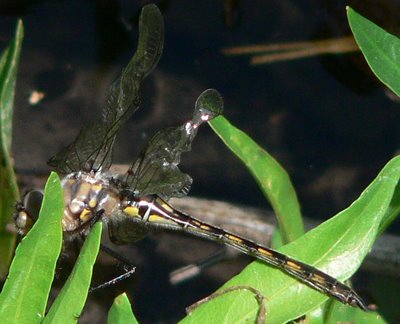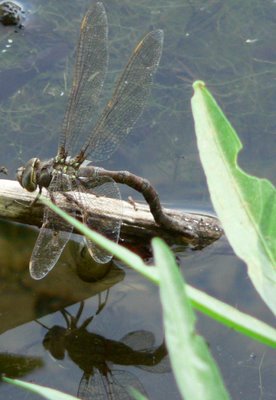
The next is a study in spininess--a sulphur-tipped clubtail (Gomphus militaris), resting on a prickly pear cactus pad.

Finally, a female blue-eyed darner (Rhionaeschna multicolor) or possibly a female turquoise-tipped darner (Rhionaeschna psilus), laying eggs. The females of these two species are nearly identical--and neither of them have eyes of blue or tips of turquoise. They can be told apart if you measure the length, but I am afraid I did not do that. The blue-eyed is more common.

A word about the name of the darner species: "Rhionaeschna" of course, refers the old Welsh goddess of shuttle-looms, whose consort Rhnghwwschngwn, god of coughs, or, acccording to some, the god of the glottal stop, was devoured by a swarm of angry vowels, causing the grief-stricken goddess to depart in perpetual mourning and assume her present form.
Click to enlarge any image.
No comments:
Post a Comment